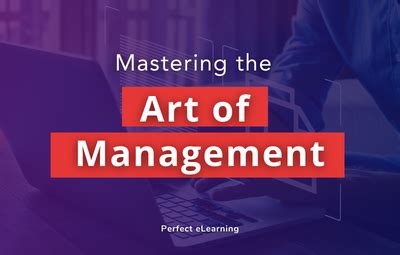Understanding Business Management
Business management encompasses the planning, organizing, leading, and controlling of an organization’s resources to achieve specific goals and objectives. It involves a multifaceted approach to managing business operations, including:

- Strategic Planning: Establishing long-term goals, objectives, and strategies for the organization.
- Operational Management: Managing day-to-day operations, including resource allocation, staffing, and quality control.
- Financial Management: Managing the organization’s financial resources, including budgeting, cash flow analysis, and investment decisions.
- Marketing Management: Developing and implementing strategies to market products or services, including pricing, advertising, and distribution.
- Human Resource Management: Managing employee recruitment, training, compensation, and performance evaluation.
Why Business Management Matters
Effective business management is crucial for organizational success and sustainability. It:
- Improves Decision-Making: Managers leverage data and analysis to make informed decisions, leading to better outcomes.
- Optimizes Resources: Management strategies allocate resources efficiently, minimizing waste and maximizing productivity.
- Promotes Innovation: Management fosters an environment that encourages creativity and idea generation, leading to new products or services.
- Enhances Employee Performance: Management provides guidance, motivation, and support to employees, empowering them to perform at their best.
- Increases Profitability: By optimizing operations and maximizing efficiency, management contributes directly to increased profitability.
Benefits of Effective Business Management
Organizations that embrace effective business management practices experience numerous benefits, including:
- Increased Productivity: Improved resource allocation and workflow optimization lead to higher productivity levels.
- Reduced Costs: Efficient operations and resource utilization reduce operating costs.
- Improved Customer Satisfaction: Enhanced employee performance and customer-focused strategies result in improved customer experiences.
- Increased Innovation: Management fosters a culture of innovation, leading to new product development and market differentiation.
- Enhanced Employee Morale: Motivated and supported employees contribute to a positive work environment and increased employee retention.
Common Mistakes to Avoid in Business Management
To avoid common pitfalls and ensure effective business management, it is essential to steer clear of the following mistakes:
- Lack of Strategic Planning: Failing to establish clear goals and strategies can lead to unfocused operations and missed opportunities.
- Poor Communication: Communication breakdowns between management and employees hinder decision-making and hinder collaboration.
- Micromanagement: Excessive control can stifle employee creativity and reduce productivity.
- Oversight of Employee Development: Neglecting employee training and growth can limit organizational performance and hinder succession planning.
- Ignoring Financial Management: Poor financial management can result in cash flow issues, debt accumulation, and financial instability.
Step-by-Step Approach to Effective Business Management
Implementing effective business management requires a systematic approach that involves:
- Define Goals and Objectives: Establish clear and measurable objectives for the organization.
- Develop a Strategic Plan: Outline the strategies and actions necessary to achieve the goals.
- Organize Resources: Allocate resources efficiently to support operational activities.
- Hire and Motivate Employees: Recruit and retain talented employees who align with organizational culture.
- Manage Operations: Oversee day-to-day business activities, including production, logistics, and customer service.
- Monitor and Control Performance: Track key metrics to assess progress and make necessary adjustments.
- Adapt to Change: Embrace innovation and adapt to changing market conditions to stay competitive.
Creative Idea Generation for New Applications
In the realm of business management, the term “ideation” refers to the process of generating innovative ideas and concepts. To foster creativity, consider these strategies:
- Brainstorming Sessions: Facilitate group discussions to spark new ideas and explore various perspectives.
- Idea Boxes: Encourage employees to submit anonymous ideas for review.
- Customer Feedback: Regularly gather customer insights and pain points to identify potential product or service improvements.
- Trend Research: Monitor industry trends and emerging technologies to stay at the forefront of innovation.
- Partnerships with Startups: Partner with startups and research institutions to gain access to cutting-edge ideas and technologies.
Useful Tables for Business Management
| Table 1: Key Performance Indicators (KPIs) for Business Management |
|—|—|
| Metric | Definition |
| Revenue | Total income generated from business activities |
| Gross Profit | Revenue minus the cost of goods sold |
| Net Profit | Gross profit minus expenses |
| Employee Turnover | Rate at which employees leave the organization |
| Customer Satisfaction Score | Measure of customer satisfaction with products or services |
| Table 2: Best Practices for Effective Communication Management |
|—|—|
| Strategy | Description |
| Use Clear and Concise Language | Communicate in a manner that is easily understood |
| Adapt Communication Style | Tailor communication to the specific audience |
| Use Multiple Communication Channels | Utilize a variety of channels to reach different stakeholders |
| Encourage Feedback | Seek input from recipients to improve communication effectiveness |
| Measure and Evaluate Communications | Track communications to understand their impact |
| Table 3: Common Leadership Styles in Business Management |
|—|—|
| Style | Characteristics |
| Autocratic | Leader makes all decisions without consulting others |
| Democratic | Leader consults with team members but makes the final decisions |
| Laissez-Faire | Leader gives team members considerable autonomy |
| Transactional | Leader motivates team members based on rewards and punishments |
| Transformational | Leader inspires and empowers team members through a shared vision |
| Table 4: Benefits of Employee Development Programs |
|—|—|
| Benefit | Impact |
| Improved Employee Performance | Increased productivity and efficiency |
| Reduced Employee Turnover | Higher employee retention rates |
| Increased Employee Motivation | Enhanced job satisfaction and enthusiasm |
| Enhanced Employee Skills | Development of new skills and capabilities |
| Improved Succession Planning | Identifying and grooming future leaders within the organization |
